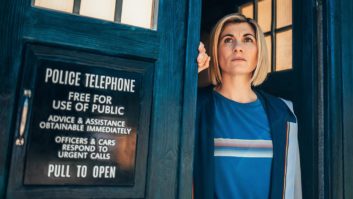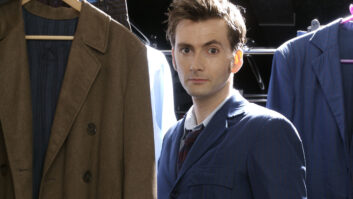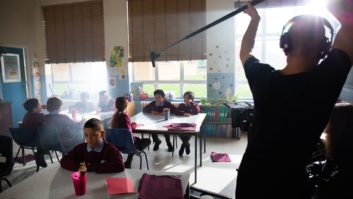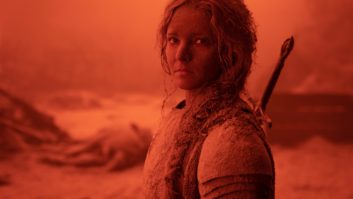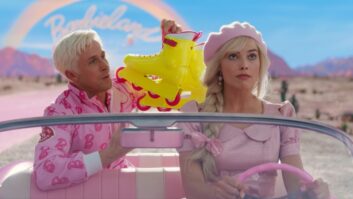Any show like Doctor Who is always going to be visual effects heavy. From its first episodes in the 1960s through to today, the show isn’t afraid to use effects to tell its story, although the modern version of Doctor Who is a lot more tech-savvy than those early episodes.
The series helped mark the BBC’s centenary in 2022 with the feature-length episode, The Power of the Doctor, which also served as Jodie Whittaker’s swansong in the TARDIS. Visual effects company DNEG began working with producer Bad Wolf in 2018 during the production of season 11, so it was a natural fit for them to continue their work on the special.
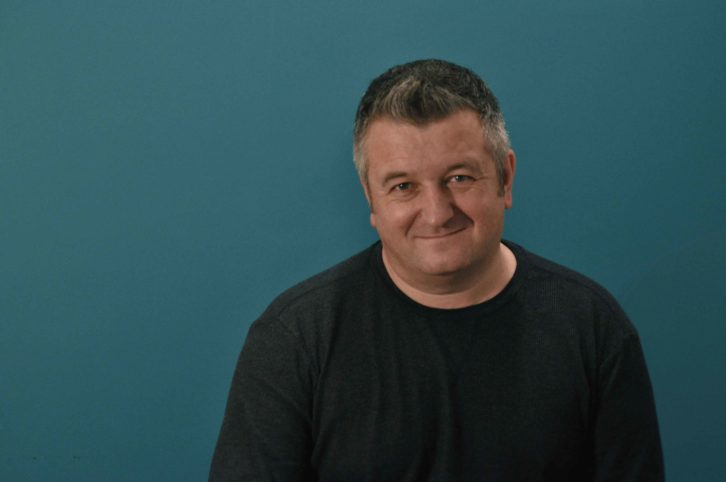
Dave Bannister worked as visual effects supervisor on the feature-length episode which meant he spent quite a lot of time on set ensuring that the company had all the data it required. “I work with the director, executive producers and the crew to make sure we shoot everything we need to shoot and then acquire the data that we need to be able to do the shots that we think we’re going to need to do,” he explains.
That data includes the camera position, tilt, lens focal length, height, and start and end points. DNEG also LIDAR scan sets in order to create a point cloud that it can generate geometry from. “We also do photogrammetry of props and Jodie herself,” Bannister continues, “which means taking loads and loads of photos from different positions so the computer can extrapolate a point cloud from it. There’s lighting references, reference photography, it’s all a part of the data that we have to acquire.”
All of that data was then used to help create the 200 VFX shots used in The Power of The Doctor, with around 150 people across DNEG’s offices in London, India and Canada involved. But surprisingly, many of those who worked on the special were not based in the office. “Personally, I’ve not been back to the office for two and a half years,” reveals Bannister.
The DNEG team were able to work remotely because the company already conforms to a high level of security due to its work on a number of Marvel projects. “When the pandemic happened and it became clear that we were going to work this way, we had to go through a rigorous security systems check and we’ve all got a particular system on the computer,” explains Bannister.
“We log into our machines in London and then everything gets run on the machines there so that there’s no data coming to my computer, everything is done at a distance. We have a tool where I can have an instance running on my computer and I’m looking at it on my monitor, and then everybody else will have an instance running on their work computer, so they’re seeing everything first-hand and not via Zoom. It’s an in-house tool that we have developed, that sits on top of RV and Shotgun. It’s an RV player, but it’s got a wrapper, which allows us to do this.”
FAST TURN-AROUND
Bannister first heard about the plans for the special episode while on set in the Brecon Beacons. He says everyone at DNEG was excited to be involved both because it marked the BBC’s centenary and because it was Whittaker’s final episode. “It was exciting because it was a feature-length show, but we were also slightly concerned because the turnaround was going be pretty quick,” he explains. “We were still in the middle of doing episodes seven or eight in the latest series when it was confirmed DNEG would be working on the special.”
The team were able to develop some assets beforehand, while the actual on-set production took around three months. “There were some late nights but it was fun,” says Bannister. “We have an ethos at DNEG, we don’t want people to have to work late nights or weekends, but we kept it to a minimum. People love Doctor Who. We had people working on it who have worked on Oscar-winning films. We had heads of department coming in and quietly working with us because they love Doctor Who and just wanted to be part of it.”
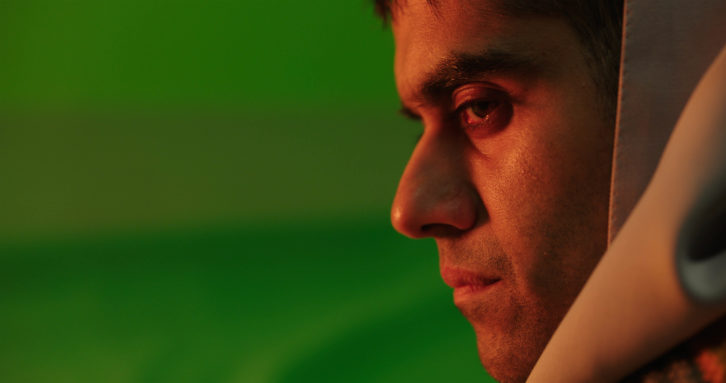
As well as its in-house technology, the DNEG team employed Photoshop for DMP (digital matte painter), Maya for build and lighting, Clarisse for rendering and Houdini for disintegrations and “blowing things up”.
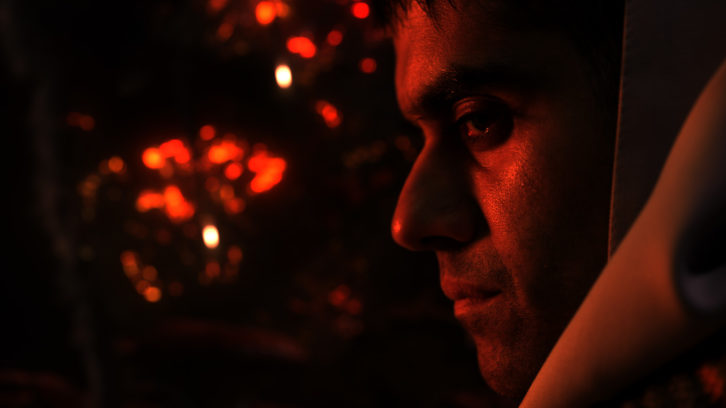
Bannister describes the relationship between the creatives at DNEG and the Doctor Who products as a “real synergy of talented people”, adding that the producers give the team a lot of leeway in creating what the audience sees on screen. “Unless they’ve got a real problem with a story point or if they really don’t like it, they just seem to love everything we do,” he continues. “We’ve worked with them for a long time now, I worked on the last series as on-set supervisor. so we have a good idea of what they like.”
But it’s not just the final 200 visual effects shots that DNEG creates. Each of those shots goes through multiple iterations before the final version is signed off. “We would very rarely go over 15 versions,” says Bannister. “A lot of shots were less than 10 versions. It depends on the complexity of the shot, of course. We didn’t have time to go through a lot of versions, unfortunately, so we had to kind of get it right straight away, which meant we had to talk to the clients to understand what the director wanted.
“That’s part of being on set, understanding exactly what they want from the shot and making sure that we tick all those boxes and tell the story the way they want it to be told. It’s the biggest one-off episode that I’ve supervised for the company, certainly in terms of the timeframe, and we had to be so careful on the budget. This is trying to be very ambitious with not as much money as you might have on other projects, but with lots of great ideas.”
CHALLENGES
The Power of The Doctor takes viewers to brand new planets that haven’t been seen on screen before, which meant the DNEG team had to create them from their own imaginations.
“There were so many different environments, so many different things to come up with. The Qurunx [an enslaved energy being], which was shot in the quarry, had to be designed from nothing. That was very difficult because there were lots of disintegrations and explosions and models to make.”
Another sequence that tested the team was the shot with Ashad the Cyber Zealot and all the Cybermen.”I turned up on set not expecting to do that,’ laughs Bannister. “We shot it and I had to make it work.
“The planet where The Master was abandoned was quite last minute design-wise. The producers didn’t like the first look we did, so we had to have another one and we eventually managed to make it happen.
“The bit where Ace jumps off the top of the building, we had to create lots of 3D assets in order for her to jump off and then kind of fly through the air and suddenly end up in the TARDIS. That plate was shot when I was in the hotel not expecting to be on set that day. Somebody showed it to me on their phone the next day! There were just so many different, but really creative and interesting challenges to get our heads around.”
Asked what’s his favourite sequence in the episode, Bannister says it’s hard to choose just one. “There is a shot when we’re on the Cyber Planet where Yaz is carrying the Doctor into the TARDIS that is just so cinematic, and it’s just so emotional.,” he adds “Visually it is really striking and just looks incredible. I also like the train sequence at the beginning because that was one I was involved with and it was just a lot of fun.
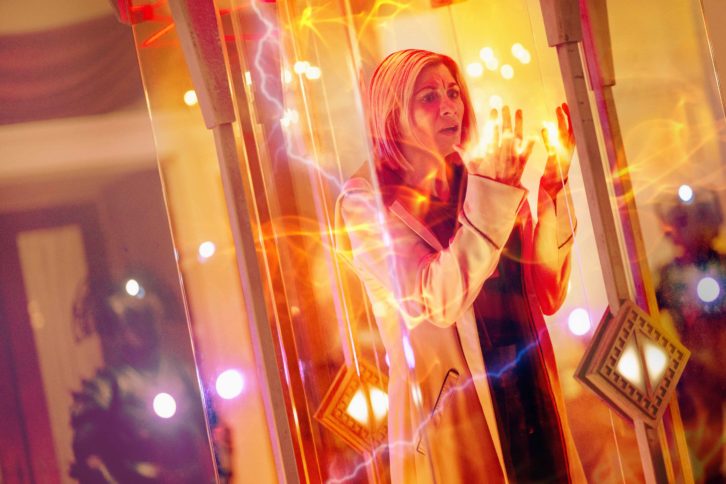
“The thing about Doctor Who is that there are so many different aspects to it. There are so many different challenges and they all have different assets. Being able to add something to the canon of Doctor Who is a real privilege,” he adds.
“DNEG didn’t work on the final sequence where Jodie was on top of Durdle Door, but I have to admit the first time I saw that, even in the rough cut, it was a real ‘it’s dusty in here’ type moment, because it was beautiful. When she says ‘right then, Doctor whoever I’m about to be – tag, you’re it,’, it was just such a Jodie moment.”
The DNEG team were able to get a sneak preview of the episode before it was broadcast on BBC One last November, and Bannister says they’re all very proud of what they accomplished. “Nothing’s ever perfect on this sort of timescale or budget but we’re pretty happy with the storytelling. We love the episode,” he concludes.
